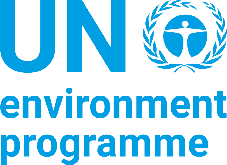The 17 Sustainable Development Goals aim to end extreme poverty and create a healthy, sustainable world by 2030. At their heart lies the health and well-being of people and our planet, making air pollution a huge threat to delivering on the vision of a better world. Tackling air pollution can also address other thematic goals. Here’s how:
Goal 1 targets the eradication of poverty. People living in poverty often rely on readily available and cheap unclean fuels for cooking and heating, leading to increased air pollution and greater vulnerability to its impacts. Efforts to eradicate poverty can therefore have significant co-benefits for air quality and vice versa.
Goal 2 focuses on zero hunger. Air pollution damages crops and reduces agricultural productivity, posing a significant risk to global food security. We can halve global crop losses by reducing methane emissions. Air pollution and climate change affect the global food system in such a way that those who suffer from hunger and malnutrition are also the most vulnerable to these added threats. In order to end hunger we must tackle these linked crises.
Goal 3 focuses on good health and well-being for all — a basic building block for people to achieve their potential in school, at work and at home. Every step we take to beating air pollution is a step towards achieving this goal.
Goal 5 aims for gender equality. Women and girls, particularly in low- and middle-income countries and rural areas, are more likely to be exposed to harmful pollutants from unclean cooking fuels. Empowering women with financial rights and technology, as outlined in targets 5.A and 5.B, can play a crucial role in reducing air pollution and improving health outcomes for women.
Goal 7 targets access to clean and affordable energy, which is key to pulling people out of poverty and enabling sustainable economic development. Three billion people cook and heat their homes with dirty fuels. The resultant air pollution kills almost 4 million people each year, mainly women and children. Clean and renewable energy will save lives and boost economic development.
Goal 9 focuses on industry, innovation, and infrastructure. Target 9.4 aims to make industries more sustainable by adopting cleaner and environmentally sound technologies and improving resource-use efficiency. Shifting industries from fossil fuels to cleaner technologies can significantly improve air quality.
Goal 11 on sustainable cities and communities is crucial in our urbanizing world. Cities account for 75 per cent of carbon emissions, and 70 per cent of the world’s population will live in urban areas by 2050. Policies that make cities smart, resilient and green — through urban planning, technology and citizen participation — can provide better air quality and transform the urban landscape.
Goal 12 promotes responsible consumption and production. Target 12.4 emphasizes improving the management of chemicals and waste, which can reduce harmful emissions into the atmosphere. Better waste management practices can significantly cut down air pollution from activities like waste burning.
Goal 13 tackles the climate crisis. Many of the air pollutants that affect our health also warm the atmosphere. Actions to improve air quality —such as switching to cleaner energy, cooking and transport solutions — will also address the climate emergency.
Goal 17 emphasizes the importance of partnerships to achieve these goals. Collaborative efforts between governments, industries, and communities are essential to reduce air pollution and fulfill the broader 2030 Agenda.
